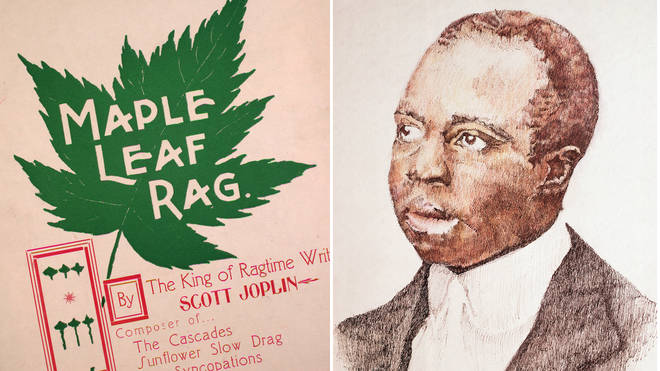
From piano rags to rich opera overtures, here’s a look at Scott Joplin’s greatest works.
Since the revival of his music in the 1970s, history has remembered as “the King of ”. His collection of rags is utterly identifiable, their sound joyously distinctive, and their complex bass patterns and sporadic syncopation still imitated by composers today.
But what’s also true is that Scott Joplin was one of the landmark American composers of the .
From his Pulitzer-winning opera to a rag-inspired classical waltz, here’s the very best of one of music history’s most extraordinary .
The Entertainer (1902)
Scott Joplin’s death in April 1917 marked a lapsed interest in Ragtime and his music. And it wasn’t until over half a decade later that people started to turn their ears back to Joplin’s catchy rags. In the early 1970s, Joshua Rifkin released a hugely successful album of his works, and Academy Award-winning film The Sting used several of Joplin’s compositions including ‘The Entertainer’ and ‘Solace’ (see below), cueing a revival of the composer’s long-neglected musical catalogue.
‘The Entertainer’ was first published in the early 1900s as sheet music, in the form of piano rolls for player pianos. Now, it is one of the essential works in the piano canon. You’ll even hear it among the playlists of tempting music piped out of ice cream trucks in the US. Ragtime with your rum n’ raisin? Go on then…
Scott Joplin's 'The Entertainer' played on a 1915 pianoCredit: Lord VinheteiroMaple Leaf Rag (1899)
Joplin was often plagued with financial woes and struggled to secure funding for many of his works. When his first rag, Original Rags, was published, he was forced to share credit with another arranger. For his second, Maple Leaf Rag, Joplin made sure he wasn’t going to get stung again. So, he hired a lawyer and made sure he would receive a one-cent royalty for every copy of sheet music sold (still, not exactly the big bucks).
Maple Leaf Rag became Joplin’s first big hit, and the piece that made his name synonymous with ragtime. But while a steady stream of earnings from Maple Leaf made their way into Joplin’s pocket throughout his short lifetime, it was unfortunately a success never to be repeated.
Scott Joplin's Maple Leaf Rag – but it's played WAY too fastCredit: Kristen MoscaMaple Leaf Rag also inspired Joplin’s own elegant Gladiolus Rag – take a listen to their similarities below.
Solace (1909)
Solace elevated the rag into a more developed artform. Unusually complex for a rag, it is the only known Joplin piece to use form and highlights Joplin’s lifelong desire to be a “serious” (his words) classical composer. Today, its staying power is perfectly demonstrated in its use as the loading music for BioShock Infinite.
Stoptime Rag (1910)
Here is one of the first examples in music of stop-time – a device heard in jazz and blues, that is absolutely central to the rhythmic spirit of Ragtime. It grew popular around the turn of the century, and gives the impression in music that the tempo has changed.
Joplin included directions in the music for performers to stomp their feet to the beat. Indeed, gone were the days of a left-hand accompaniment – instead, the left joins the right to create a melody line with richer harmony, while the pianist’s foot provides a percussive accompaniment of stamps.
Read more:
The Ragtime Dance (1902)
This relentlessly toe-tapping dance was originally published for solo piano, with foot stamps written into the original sheet music to achieve that stop-time effect.
In the 1980s, legendary violinist came across The Ragtime Dance and fell in love with the piece. He rearranged it for violin, piano and finger snaps and brought pianist on board, giving Joplin’s piece the classical clout that it always deserved.
Bethena: A Concert Waltz (1905)
Bethena: A Concert Waltz was the first piece Joplin wrote after his wife, Freddie, tragically died of pneumonia in September 1904, 10 weeks after their wedding.
The piece was soon forgotten, but Joshua Rifkin’s 1970s album of piano rags helped revive this unique work that marries the classical waltz and the rag. It’s been described as “Joplin’s finest waltz”, one that shows his excellence as a classical composer.
Treemonisha (1911)
Not one of his best-known works, but an important one for which Joplin was posthumously awarded the Pulitzer Prize in 1976, Treemonisha was one of Joplin’s two only (he also wrote one ).
Speaking about forgotten Black classical composers, Comedian Lenny Henry writes for : “What is great about Treemonisha is that the heroine does not die like most classical leading ladies – by the knife, by poison or yearning for a man – but becomes a leader of the community.
“Joplin was way ahead of his time. He found it very difficult to get his work performed.”
Treemonisha, which combines the Romanticism of the early 20th century with Black folk song tradition, was never staged in his lifetime. When it was finally first performed in 1972 by the Houston Grand Opera, one music historian described it as a “semimiracle”.

